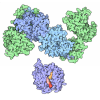Entry Database : PDB / ID : 5ibmTitle Structure of S502P, a Cancer-Associated Mutation of the Oncogenic Phosphatase SHP2 Tyrosine-protein phosphatase non-receptor type 11 Keywords / / Function / homology Function Domain/homology Component
/ / / / / / / / / / / / / / / / / / / / / / / / / / / / / / / / / / / / / / / / / / / / / / / / / / / / / / / / / / / / / / / / / / / / / / / / / / / / / / / / / / / / / / / / / / / / / / / / / / / / / / / / / / / / / / / / / / / / / / / / / / / / / / / / / / / / / / / / / / / / Biological species Homo sapiens (human)Method / / / Resolution : 2.18 Å Authors Blacklow, S.C. / Stams, T. / Fodor, M. / LaRochelle, J.R. Journal : Biochemistry / Year : 2016Title : Structural and Functional Consequences of Three Cancer-Associated Mutations of the Oncogenic Phosphatase SHP2.Authors : LaRochelle, J.R. / Fodor, M. / Xu, X. / Durzynska, I. / Fan, L. / Stams, T. / Chan, H.M. / LaMarche, M.J. / Chopra, R. / Wang, P. / Fortin, P.D. / Acker, M.G. / Blacklow, S.C. History Deposition Feb 22, 2016 Deposition site / Processing site Revision 1.0 Apr 13, 2016 Provider / Type Revision 1.1 May 4, 2016 Group Revision 1.2 Sep 27, 2023 Group Data collection / Database references ... Data collection / Database references / Derived calculations / Refinement description Category chem_comp_atom / chem_comp_bond ... chem_comp_atom / chem_comp_bond / citation / database_2 / pdbx_initial_refinement_model / pdbx_struct_oper_list Item _citation.journal_id_CSD / _database_2.pdbx_DOI ... _citation.journal_id_CSD / _database_2.pdbx_DOI / _database_2.pdbx_database_accession / _pdbx_struct_oper_list.symmetry_operation
Show all Show less
 Yorodumi
Yorodumi Open data
Open data Basic information
Basic information Components
Components Keywords
Keywords HYDROLASE / TYROSINE PHOSPHATASE SHP2 S502P / Tyrosine-protein phosphatase non-receptor type 11
HYDROLASE / TYROSINE PHOSPHATASE SHP2 S502P / Tyrosine-protein phosphatase non-receptor type 11 Function and homology information
Function and homology information phosphoprotein phosphatase activity / Bergmann glial cell differentiation / regulation of cell adhesion mediated by integrin / regulation of type I interferon-mediated signaling pathway / neurotrophin TRK receptor signaling pathway / inner ear development / platelet-derived growth factor receptor signaling pathway / non-membrane spanning protein tyrosine phosphatase activity / RET signaling / peptidyl-tyrosine dephosphorylation /
phosphoprotein phosphatase activity / Bergmann glial cell differentiation / regulation of cell adhesion mediated by integrin / regulation of type I interferon-mediated signaling pathway / neurotrophin TRK receptor signaling pathway / inner ear development / platelet-derived growth factor receptor signaling pathway / non-membrane spanning protein tyrosine phosphatase activity / RET signaling / peptidyl-tyrosine dephosphorylation /  Interleukin-3, Interleukin-5 and GM-CSF signaling / PI3K Cascade / Regulation of IFNA/IFNB signaling / PD-1 signaling / negative regulation of insulin secretion / regulation of protein-containing complex assembly / ephrin receptor signaling pathway / fibroblast growth factor receptor signaling pathway / GAB1 signalosome / Activated NTRK2 signals through FRS2 and FRS3 / Regulation of IFNG signaling / positive regulation of insulin receptor signaling pathway / FRS-mediated FGFR3 signaling / Signaling by CSF3 (G-CSF) / Signaling by FLT3 ITD and TKD mutants / homeostasis of number of cells within a tissue / FRS-mediated FGFR2 signaling / FRS-mediated FGFR4 signaling / FRS-mediated FGFR1 signaling / GPVI-mediated activation cascade /
Interleukin-3, Interleukin-5 and GM-CSF signaling / PI3K Cascade / Regulation of IFNA/IFNB signaling / PD-1 signaling / negative regulation of insulin secretion / regulation of protein-containing complex assembly / ephrin receptor signaling pathway / fibroblast growth factor receptor signaling pathway / GAB1 signalosome / Activated NTRK2 signals through FRS2 and FRS3 / Regulation of IFNG signaling / positive regulation of insulin receptor signaling pathway / FRS-mediated FGFR3 signaling / Signaling by CSF3 (G-CSF) / Signaling by FLT3 ITD and TKD mutants / homeostasis of number of cells within a tissue / FRS-mediated FGFR2 signaling / FRS-mediated FGFR4 signaling / FRS-mediated FGFR1 signaling / GPVI-mediated activation cascade /  cell adhesion molecule binding / cellular response to epidermal growth factor stimulus / Tie2 Signaling / T cell costimulation / FLT3 Signaling / positive regulation of interferon-beta production / hormone-mediated signaling pathway / phosphotyrosine residue binding / positive regulation of mitotic cell cycle / Downstream signal transduction /
cell adhesion molecule binding / cellular response to epidermal growth factor stimulus / Tie2 Signaling / T cell costimulation / FLT3 Signaling / positive regulation of interferon-beta production / hormone-mediated signaling pathway / phosphotyrosine residue binding / positive regulation of mitotic cell cycle / Downstream signal transduction /  axonogenesis / protein dephosphorylation / Activation of IRF3, IRF7 mediated by TBK1, IKKε (IKBKE) /
axonogenesis / protein dephosphorylation / Activation of IRF3, IRF7 mediated by TBK1, IKKε (IKBKE) /  protein tyrosine kinase binding /
protein tyrosine kinase binding /  protein-tyrosine-phosphatase / DNA damage checkpoint signaling /
protein-tyrosine-phosphatase / DNA damage checkpoint signaling /  protein tyrosine phosphatase activity / integrin-mediated signaling pathway / positive regulation of glucose import / Negative regulation of FGFR3 signaling / Negative regulation of FGFR2 signaling / Negative regulation of FGFR4 signaling / Negative regulation of FGFR1 signaling / Spry regulation of FGF signaling /
protein tyrosine phosphatase activity / integrin-mediated signaling pathway / positive regulation of glucose import / Negative regulation of FGFR3 signaling / Negative regulation of FGFR2 signaling / Negative regulation of FGFR4 signaling / Negative regulation of FGFR1 signaling / Spry regulation of FGF signaling /  brain development /
brain development /  insulin receptor binding / epidermal growth factor receptor signaling pathway
insulin receptor binding / epidermal growth factor receptor signaling pathway
 Homo sapiens (human)
Homo sapiens (human) X-RAY DIFFRACTION /
X-RAY DIFFRACTION /  SYNCHROTRON /
SYNCHROTRON /  FOURIER SYNTHESIS / Resolution: 2.18 Å
FOURIER SYNTHESIS / Resolution: 2.18 Å  Authors
Authors Citation
Citation Journal: Biochemistry / Year: 2016
Journal: Biochemistry / Year: 2016 Structure visualization
Structure visualization Molmil
Molmil Jmol/JSmol
Jmol/JSmol Downloads & links
Downloads & links Download
Download 5ibm.cif.gz
5ibm.cif.gz PDBx/mmCIF format
PDBx/mmCIF format pdb5ibm.ent.gz
pdb5ibm.ent.gz PDB format
PDB format 5ibm.json.gz
5ibm.json.gz PDBx/mmJSON format
PDBx/mmJSON format Other downloads
Other downloads https://data.pdbj.org/pub/pdb/validation_reports/ib/5ibm
https://data.pdbj.org/pub/pdb/validation_reports/ib/5ibm ftp://data.pdbj.org/pub/pdb/validation_reports/ib/5ibm
ftp://data.pdbj.org/pub/pdb/validation_reports/ib/5ibm

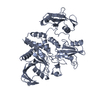
 Links
Links Assembly
Assembly

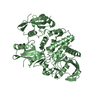
 Components
Components
 Homo sapiens (human) / Gene: PTPN11, PTP2C, SHPTP2 / Production host:
Homo sapiens (human) / Gene: PTPN11, PTP2C, SHPTP2 / Production host: 
 Escherichia coli (E. coli) / Strain (production host): BL21 (DE3) / References: UniProt: Q06124,
Escherichia coli (E. coli) / Strain (production host): BL21 (DE3) / References: UniProt: Q06124,  protein-tyrosine-phosphatase
protein-tyrosine-phosphatase Water
Water X-RAY DIFFRACTION / Number of used crystals: 1
X-RAY DIFFRACTION / Number of used crystals: 1  Sample preparation
Sample preparation
 SYNCHROTRON / Site:
SYNCHROTRON / Site:  APS
APS  / Beamline: 17-ID / Wavelength: 1 Å
/ Beamline: 17-ID / Wavelength: 1 Å : 1 Å / Relative weight: 1
: 1 Å / Relative weight: 1  Processing
Processing :
:  FOURIER SYNTHESIS
FOURIER SYNTHESIS Movie
Movie Controller
Controller


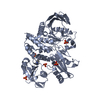


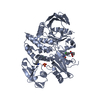



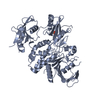


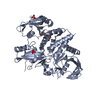
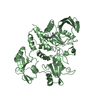

 PDBj
PDBj











